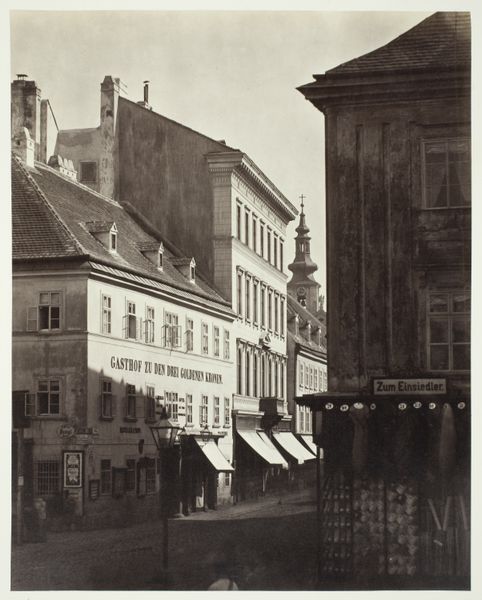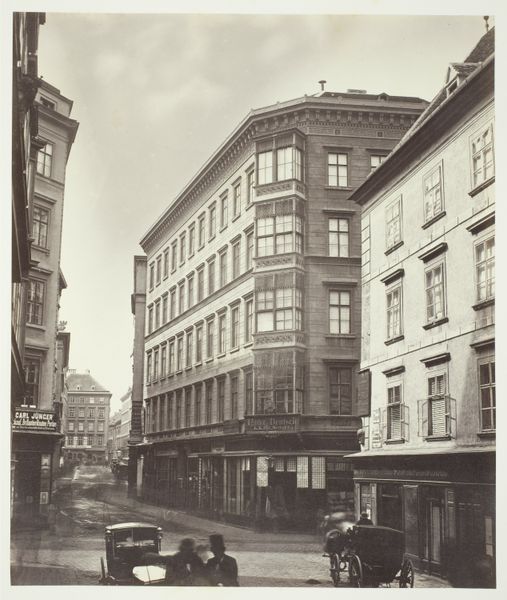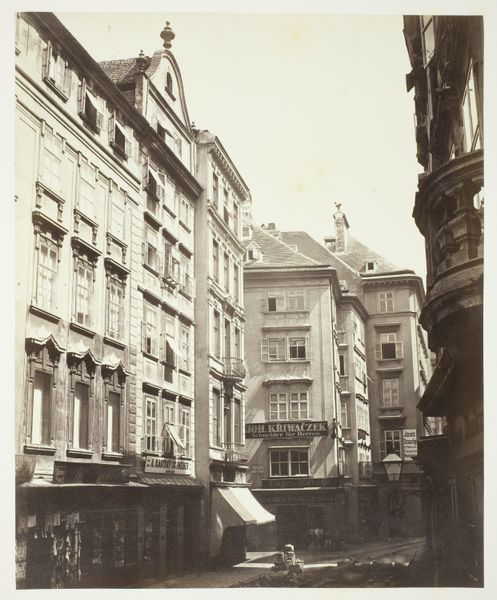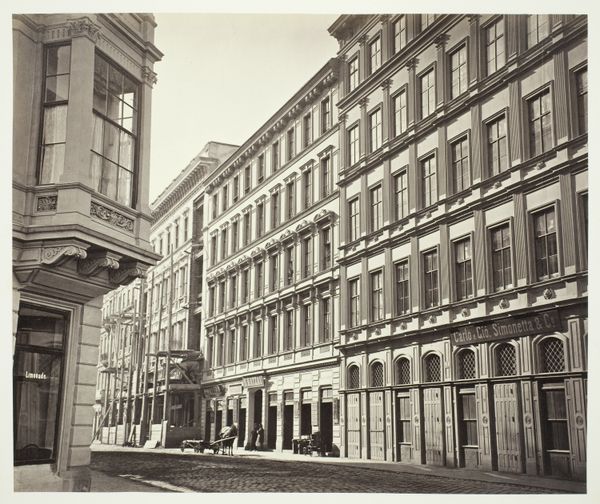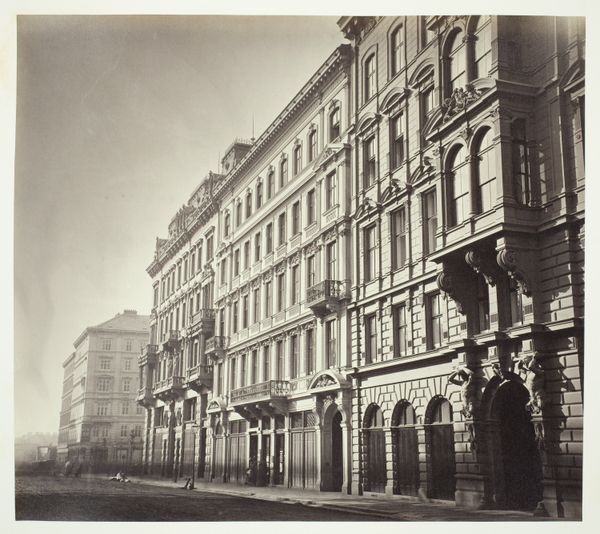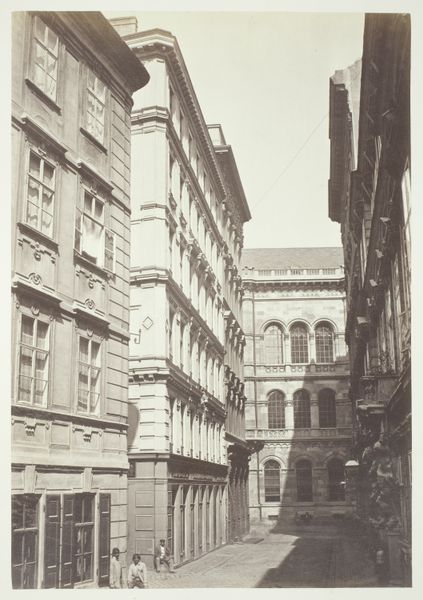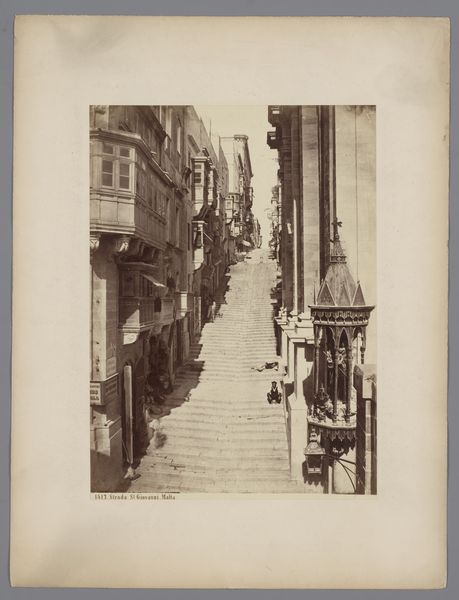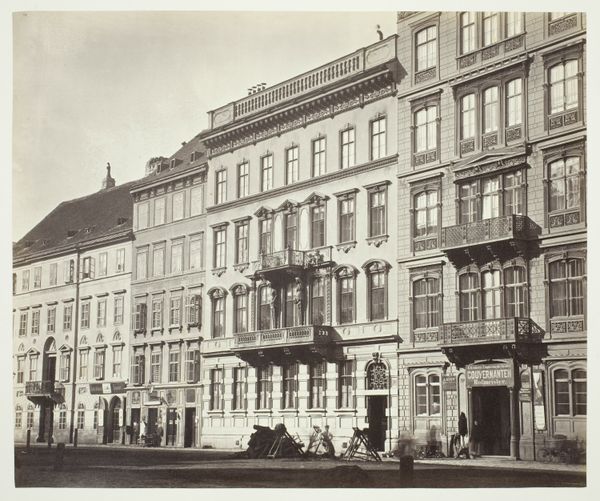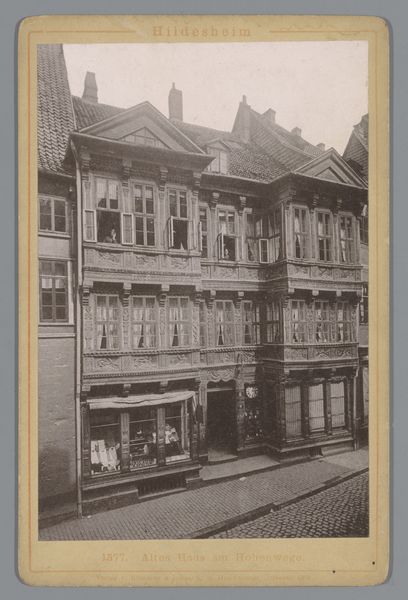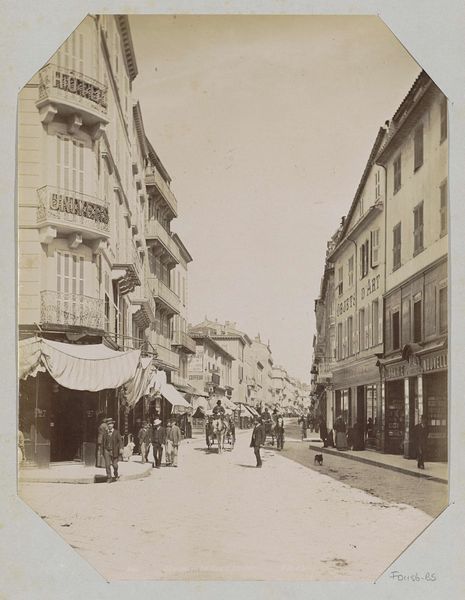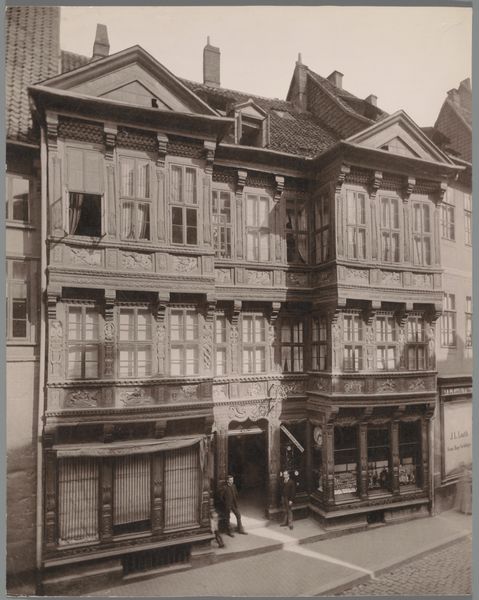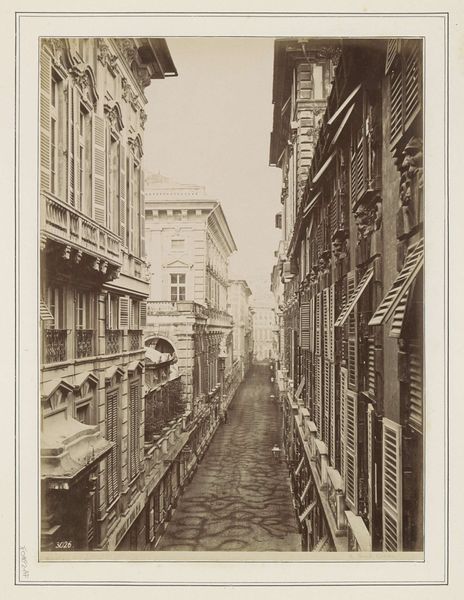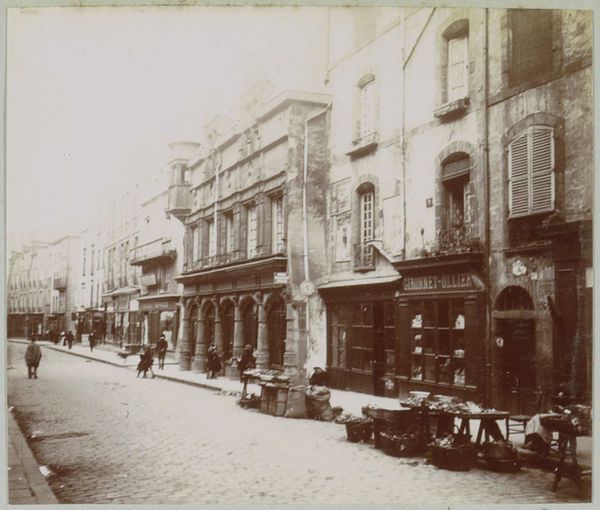
Wollzeile No. 9, Wohnhaus des Grafen Friedrich Fünfkirchen c. 1860s
0:00
0:00
silver, print, photography
#
16_19th-century
#
silver
# print
#
outdoor photograph
#
historic architecture
#
photography
#
historical photography
#
cityscape
Dimensions: 30.8 × 25.9 cm (image/paper); 61.2 × 42.7 cm (album page)
Copyright: Public Domain
Curator: This silver print from the 1860s captures "Wollzeile No. 9, Wohnhaus des Grafen Friedrich Fünfkirchen," showcasing a street scene in Vienna. What are your initial impressions? Editor: Austere. There's a definite chill, even with what looks like daylight. It's a perspective that feels almost clinical. Did the count's house loom large in Vienna? Curator: That is a fantastic observation; I can see why you say that. This photograph exists amidst the transformation of urban centers and, indeed, reflects anxieties around social hierarchy, surveillance, and class divides. It begs the question of how visual technologies codified power dynamics in rapidly changing societies. Editor: Visually, those repeated window shapes certainly suggest order, control. Notice, too, the repeated awning shapes. Were such stark forms of visual repetition common symbols in the culture, or perhaps personal to the count, Friedrich Fünfkirchen, or representative of his rank? Curator: We should unpack the fact that architecture is never a neutral backdrop but always embodies power. This street scene likely catered to or excluded certain segments of society. It is worthwhile asking whether this piece normalizes specific class relationships. I also question what function the artist had at that time. Were they a gatekeeper or an objective observer? Editor: Certainly. We know architectural photographs helped solidify particular narratives around progress and civilization at this time. It’s easy to overlook that every cafe sign or balcony detail contributes to this overarching symbolic system, solidifying narratives around privilege and social stratification. The arrangement and density are visually oppressive! Curator: And if we reflect on contemporary practices, the parallels can be alarming. Consider how city planning or architectural photography, even today, consciously or unconsciously privileges particular socioeconomic classes or even cultural identities while implicitly excluding or marginalizing others. This photography is a chilling reminder to analyze the underlying intentions and impact of any representation of the built environment. Editor: Seeing it this way really adds layers to a seemingly simple cityscape. The emotional impact is fascinating, prompting thoughts about authority, the observer's role, and echoes in contemporary structures and who they really serve.
Comments
No comments
Be the first to comment and join the conversation on the ultimate creative platform.

